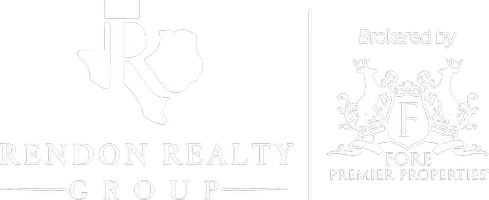How To Make Sure Your Sale Crosses the Finish Line

If there was one simple step that could help make your home sale a seamless process in Fredericksburg, Kerrville, and across the Texas Hill Country, wouldn’t you want to know about it?
There’s a lot that happens from the time your house goes under contract to closing day. And a few things still have to go right for the deal to go through. But here’s what a lot of sellers may not know.
There’s one part of the process where some homeowners are hitting a road bump that’s causing buyers to back out these days. But don’t worry. The majority of these snags are completely avoidable—especially when you understand what’s causing them and how to be proactive.
That’s where a great agent (and a little prep) can make all the difference here in the Hill Country.
What’s Causing Some Buyers To Back Out
The latest data from Redfin says 15% of pending home sales are falling through. And that’s not wildly higher than the 12% norm from 2017–2019. But it is an increase.
That means roughly 1 in 7 deals today don’t make it to the closing table. But, at the same time, 6 out of 7 do. So, the majority of sellers never face this problem—and odds are, you won’t either. You can help make it even less likely if you know how to get ahead.
You might assume the main reason buyers are backing out today is financing. But that’s actually not the case. The most common deal breaker today, by far, is inspection and repair issues (see graph below):
Here’s why that’s a sticking point for buyers right now:
- Buyers are already stretched thin from high prices and challenging mortgage rates, so they don’t have the appetite (or budget) for unexpected repairs.
- If they’re going to spend all that money, they want something move-in ready. They don’t want to take on another high-cost project themselves.
- They have more homes to choose from, so if yours seems like a hassle—or if you’re not willing to fix something—they can move on.
The Hill Country Twist: Common Snags I See Locally
In Fredericksburg, Kerrville, and surrounding communities, the “inspection” bucket often includes rural-specific items:
- Septic systems (OSSF): missing service records, failing aerators, or unknown tank location/access. Pumping/inspection before listing can prevent surprises. [verify local OSSF record link]
- Water wells: low yield, pressure tank issues, or unclear water quality testing history (bacteria/minerals). A basic yield check and water test up front goes a long way. [verify test panel requirements]
- Roof & outbuildings: older metal roofs with hail/wear, and barns/shops built without permits or with non-permitted electrical.
- Drainage on sloped/rocky lots: mis-graded driveways, clogged culverts, or water pooling near the slab after heavy Hill Country rains.
- Wood-destroying insects (WDI): missing or expired reports on rural properties with lots of wood fencing/outbuildings.
- Utilities & fuel: propane line condition, regulators, and documentation; clarity on electric provider (e.g., CTEC) and any transfer needs.
The sellers who do best here are the ones who get ahead of these items. Enter the pre-listing inspection.
What’s a Pre-Listing Inspection?
It’s exactly what it sounds like: a professional home inspection you schedule before your home hits the market. And while it’s not required, the National Association of REALTORS® (NAR) explains why it can be valuable right now:
“To keep deals from unraveling . . . it allows a seller the opportunity to address any repairs before the For Sale sign even goes up. It also can help avoid surprises like a costly plumbing problem, a failing roof or an outdated electrical panel that could cause financially stretched buyers to bolt before closing.”
Think of it as a way to avoid future headaches. You’ll know what issues could pop up during the buyer’s inspection—and you’ll have time to fix them or decide what to disclose before you go live.
This way, when the buyer’s inspector walks in, you’re ready. No surprises. No last-minute panic. No deal on the line.
Make It Hill Country-Smart
If we decide a pre-listing inspection fits your property, consider bundling a few rural add-ons so buyers feel confident:
- General home inspection (structure, systems, safety)
- Septic inspection & recent pump-out receipt (if applicable)
- Well yield & basic water quality test (if on well)
- WDI report (wood-destroying insects)
- Roof evaluation and HVAC service check
- Simple disclosure packet with any recent repairs, permits, and service records
Is It Worth It?
Generally speaking, a pre-listing inspection costs just a few hundred dollars. So, it’s not a big expense. And the information it gives you is invaluable. But before you make that investment, talk to your local agent.
In some markets, it may not be worth it. In others—especially with rural systems involved—it can be the best move you make. It depends on what’s happening right now in Gillespie and Kerr Counties and what’s working for similar homes. If your agent recommends getting one, they’ll also:
- Help you decide which issues to fix (and which to disclose)
- Prioritize repairs based on what buyers here focus on
- Connect you with trusted local pros (well/septic, roof, HVAC, electrical)
- Ensure you understand disclosure requirements and local norms
That small step could save your deal (and your timeline).
Bottom Line
If there was one simple step that could help your Hill Country sale go according to plan, would you do it?
If you’d rather deal with surprises on your terms (not with the clock ticking under contract), talk to a local agent about whether a pre-listing inspection makes sense for your property. It may be worth it so you can hit the market confident, prepared, and in control.
GET MORE INFORMATION







